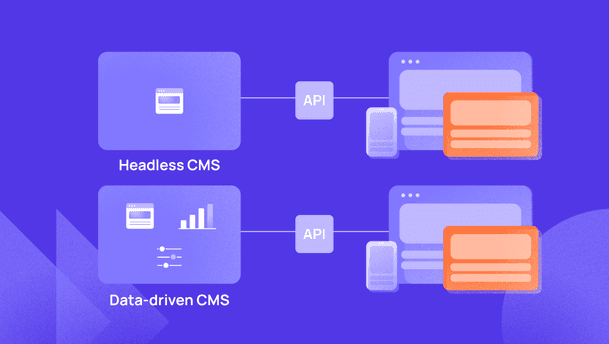Headless CMS
Exploring HubSpot CMS Hub vs. Headless CMS: features, benefits, and key considerations

Businesses today have a plethora of options for building and managing their digital platforms. Recently, HubSpot entered the arena with its CMS Hub, expanding the choices available. But how does the HubSpot CMS Hub compare to a headless CMS? Understanding the benefits of HubSpot CMS, and the pros and cons of headless CMS can help you make an informed decision tailored to your needs.
What is HubSpot?
Originally designed as a powerful CRM (Customer Relationship Management) system, HubSpot has been instrumental in helping businesses deliver seamless customer experiences—from attracting visitors and generating leads to closing deals. With HubSpot, companies can provide a premium experience for their clients.
Introduction to HubSpot CMS Hub
Recently, HubSpot expanded its offerings with the CMS Hub, a robust content management system. According to HubSpot, the CMS Hub allows users to effortlessly create and personalize website pages for every visitor, optimized for conversion across all devices. Key HubSpot CMS features include:
- SEO recommendations
- Full integration with HubSpot CRM
- Drag-and-drop editor
- Pre-built website themes
The traditional approach - Benefits of Hubspot CMS
The CMS Hub functions like a traditional CMS, where the backend and frontend are connected. This makes it especially useful for marketers already using HubSpot’s marketing and sales tools. With seamless HubSpot CRM integration, you can track visitor engagement and create personalized messages, all in one place. This "monolithic" setup, where all features are under one vendor, ensures a cohesive experience.
One-stop shop
CMS Hub serves as a one-stop shop for all marketing and sales-related content efforts. However, its integrated nature can limit creativity and vendor flexibility. A notable drawback is its closed-loop system, which often restricts the integration of external features with the HubSpot CMS.
Hubspot cms Pros & Cons
👍 User-friendly
👍 Easy to implement
👍 Focused on marketers familiar with HubSpot CRM
👍 Faster time-to-market
👎 Creative limitations
👎 Vendor lock-in
HubSpot CMS Hub is excellent for creating business websites that marketers and content editors can easily modify. However, for more complex and diverse projects, a headless CMS might be the better choice.
Here’s why.
What is a Headless CMS?
A headless CMS is a backend-only content management system that delivers digital content through an API. This approach decouples the front end (presentation layer) from the back end (database), providing more flexibility and control. You can create, manage, and publish content in the backend, delivering it across various platforms—be it a mobile app, website, or digital display—using an API.
Best-of-breed approach
While traditional systems like HubSpot CMS can be constrained by their monolithic structure, a headless CMS offers the flexibility to build any front-end design you envision. Essentially a best-of-breed solution, a headless CMS allows you to select and integrate the most suitable features for your needs. This means you can incorporate any functionality you require by integrating it into your headless setup.
Developers have the freedom to choose their preferred frameworks, fostering greater creativity and innovation. Additionally, headless CMSs provide access to the latest technologies, which is often limited in monolithic systems due to their comprehensive, all-in-one development approach.
Agility and customization
A headless CMS offers significant agility by focusing solely on content storage and delivery, unburdened by front-end constraints. This separation allows for zero downtime during maintenance and the freedom to choose the best front-end tools and technologies. However, it necessitates more development effort and can extend the time-to-market for new digital platforms - It’s something to keep in mind when deciding between a monolithic or best-of-breed solution.
Headless Pros & Cons
👍 Development freedom
👍 No vendor lock-in
👍 No technical limitations
👍 Cost-effective when implementing open-source solutions
👎 Requires more groundwork
👎 Longer time-to-market
Headless CMS and HubSpot CMS Hub: What’s Best for You?
Choosing between a headless CMS and HubSpot CMS Hub depends largely on your specific requirements. While a traditional CMS offers user-friendly features and integration benefits for marketers and editors, it can limit your flexibility and technological freedom.
If you’re comfortable with the limitations and roadmap of a single, monolithic solution, HubSpot CMS might be ideal for you. However, if you prioritize access to the latest technology and best-of-breed capabilities, exploring a headless CMS might be advantageous. A headless CMS allows for greater personalization and agility, especially if you’re willing to invest time in designing your own architecture.



